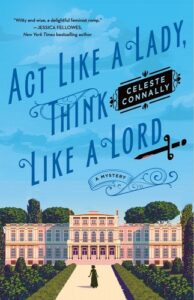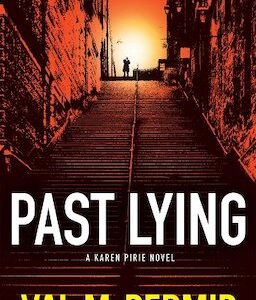I’d wager a box of my favorite tea that you’ve heard of Bridgerton by now. Maybe even that it’s that occasionally spicy period drama based upon author Julia Quinn’s romance series of the same name. And, most likely, that it’s set during the Regency period and features lots of ballroom dances, courtly manners, a few swoons, and roguish men wearing elaborate cravats and headstrong women who had to marry by the time they were in their early twenties or face being labeled—egad—a spinster.
Yet while Regency romances in general have been around, well, since the Regency—which officially spanned from 1811 to 1820, though its influences began before and stuck around until 1837, when Queen Victoria ushered in the Victorian Era—like all literary genres and sub-genres, it goes up and down in the reading zeitgeist.
However, as of the last few years, the Regency romance novel has had a particularly good return to the readers’ ball thanks not entirely, but in large part, to Bridgerton. Indeed, this resurgence has fully reawakened the delightful dragon that is those readers who love all things Jane Austen and the Regency, and who continue to look for books set during that fanciful, fashionable, and thoroughly fascinating time.
And at that ball, stepping onto the dance floor is the Regency-set mystery, bowing and curtsying to their romance-novel partners. For they have a common urge to share space on bookstore shelves, as well as the hearts of historical-fiction-loving readers. And my own new Regency-set mystery, Act Like a Lady, Think Like a Lord, is here to dance the quadrille right along with them.
Not that mysteries set during the early to mid-nineteenth century are new by any means. Excellent Regency mysteries penned in the last decade or so include Andrea Penrose’s Wrexford and Sloane series, Stephanie Barron’s Being a Jane Austen series, and Darcie Wilde’s Rosalind Thorne series. There’s even many romances set in the Regency period that also have some mystery built in as well, even if it’s a little more along the lines of a jewel theft or similar less-morbid stakes rather than a true murder-mystery whodunit.
Or, in the case Act Like a Lady, Think Like a Lord, a bit of whodunit mixed with a faster-paced aspect of a light thriller—plus a large dollop of romance out of my own love for handsome, fictional rogues in cravats, and out of a deep respect for the Regency mystery’s amiable, smart, and infinitely enjoyable sister novels.
In fact, it was my love of romances, plus quite a bit of bingeing of period dramas during the pandemic that led me to wanting to write a heroine set in the Regency era, but with a bit of a twist in how she sought out her own personal happily ever after: I wanted my main character, Lady Petra Forsyth, at twenty-four years of age, to decide she did not want to marry.
I wanted to write Lady Petra as that unmarried woman—aka the spinster—who refused to be pitied because she chose not to take a husband after the untimely death of her fiancé, and who demonstrated the strength all those real-life historical spinsters had to have on the inside simply to survive and persevere in such a patriarchal world. For when I really thought about it, unmarried women of that time (and just about any historical time, let’s face it), had to be tough. Really tough, emotionally speaking, in order to so much as hold their head up every day when their situation in life was considered so pitiable and unworthy of respect by others around them, and with the married women they encountered often being just as cruel as any man.
Yet, despite Lady Petra’s lack of a husband, another thing about Regency romances that I leaned into with relish when writing my mystery was the very thing that has always made them popular—that is, the romantic relationships.
Of course, it’s no unique thing for a mystery to have affairs of the heart in the plot, but few can compare to the angst, longing looks, and social taboos that are inherent in the Regency romance.
Only once again, I gave mine a feminist twist. For just as much as well-bred ladies of the time (and their overprotective mamas) guarded their virtue like it was the Bank of England and nearly every breathing male was determined to engineer a Mission Impossible-style break-in, many women were also, shall we say, often willing to give away the keys to the bank without a wedding ring on their finger first—especially if they were engaged.
Indeed, though social rules were firmly in place, and adhered to while out and about in society, the Regency was rather less uptight in terms of sexual freedom than the later Victorian Era. And while Lady Petra Forsyth has declared herself as never wishing to marry in Act Like a Lady, Think Like a Lord, she had been engaged to a man she loved and lost. Thus, I did not write her as having any measure of guilt for no longer being virtuous even though she never made it down the aisle.
And though I did consider making Petra the poor relation who still had access to society, instead I made her the respected daughter of the earl. I wanted her to have grown up having it all, including the full spectrum of London society open to her, and then learn to face the criticism that comes with choosing not to marry, as well as wanting to use her position to attempt to help other women of all statuses regain their own agency. So it was a lady that she became. And in my humble writer’s opinion, I felt like her position in life only upped the stakes in everything she did and said, giving my light thriller more tension at every turn.
Plus, there is an equal amount of skullduggery and nefarious goings-on in the great houses of the ton—that is, London society—as there is in the back alleys of London’s East End. And in Act Like a Lady, Think Like a Lord at least, it’s just possible that the gentlemen, lords, and ladies of London society might be more vicious than any unmannered reprobate Lady Petra could encounter.
***


















